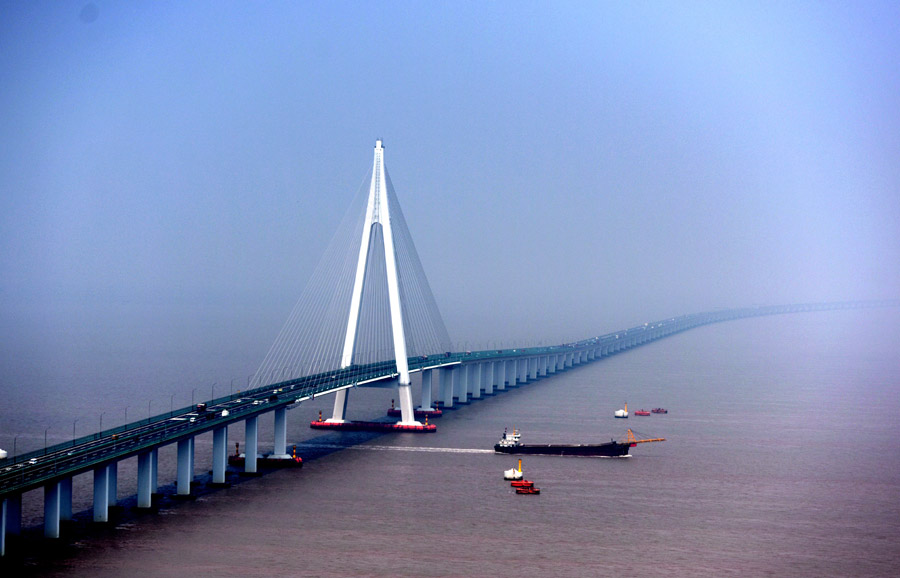The economy of the ASEAN+3 region is projected to grow 5.4 percent in 2018, underpinned by resilient domestic demand and export growth with stable inflation, said a new report released on Thursday by the ASEAN+3 Macroeconomic Research Office (AMRO).
The ASEAN+3 comprises the 10 Association of Southeast Asian Nations (ASEAN) member states, China, Japan and South Korea. The 10 member states of ASEAN are Indonesia, Thailand, Vietnam, Singapore, Malaysia, the Philippines, Myanmar, Cambodia, Laos and Brunei.
The report, titled ASEAN+3 Regional Economic Outlook (AREO) 2018, predicts a "robust" growth this year in China and Japan, the region's two largest economies.
"With improving external demand, growth in the region is expected to be sustained at 5.4 percent for 2018 and 5.2 percent for 2019," said AMRO Chief Economist Hoe Ee Khor.
"However, in view of the risks of tightening global financial conditions and trade protectionism, it would be prudent for policymakers to prioritize financial stability over the economic growth objective," Khor said.
AMRO is the research and monitoring unit of the Chiang Mai Initiative, a multi-country currency swap agreement that was created in the aftermath of the crisis.
Boosted by favorable global conditions in 2018, AMRO said the economic outlook has improved across the ASEAN+3 economies.
However, AREO warned the region to remain vigilant given the significant external risks in the near term of trade protectionism and a faster-than-expected tightening in global financial conditions.
In the longer term, it said structural trends in regional production and trade networks and technology are prompting policymakers in the region to relook at appropriate policies to secure growth and development in future.
Based on AMRO's analysis, most regional economies are at mid-business cycle, where growth is picking up with small output gap close to zero and stable inflation.
In the credit cycle, it said credit has started slowing in many regional economies after a period of above-trend growth, partly reflecting the result of pro-active policy action by authorities.
Despite resilient domestic demand and stronger external demand for exports, AREO says the region is facing two near-term risks: faster-than-expected tightening in global financial conditions led by the U.S. Fed's interest rate hikes and an escalation of global trade tensions.
"If these risks materialize, there would be spillovers to the region through capital outflows, higher borrowing costs, and lower trade and investment flows," the report said.
The report said improving external demand has allowed the region to build up buffers further against potential external shocks. "Regional exchange rates have become more flexible in recent years, and have played a greater role as a shock absorber," the report said.
To enhance resilience, the report said policymakers in the region should continue to build policy space, particularly in monetary policy, in anticipation of tighter global financial conditions ahead.
Fiscal policy may have to play a greater role in supporting growth while macroprudential policy can help safeguard financial stability, the report said.
The AREO 2018 also contains a thematic study on how the region can maintain its resilience and growth in view of fundamental and global changes in technology and in trade and production networks.
These global forces are putting the region's "manufacturing for exports" growth strategy, which has spurred the region's growth and development over the past decades to the test.
"Technology has proven to be a double-edged sword as manufacturing is becoming more capital and skills intensive and will no longer employ as much labor as in the past," the report said.
The report further said structural changes in global value chains have also allowed countries to produce domestically instead of importing intermediate inputs. However, it said technology has facilitated the emergence of the services sector as a potential new engine of growth and employment.
To address these challenges, the report said the region as a whole should strengthen intra-regional connectivity and integration to leverage on growing intra-regional final demand and improve the resilience of the region as a whole against external shocks such as protectionism.
Individual economies should build resilience through developing multiple engines of growth, including the growing services sector, said the report.
"The ample resources and diversity in development within the ASEAN+3 region are sources of strength," Khor said.
"The region should improve connectivity through investment in infrastructure with trade facilitation policies, grow a vibrant services sector, and develop a skilled labor force through labor upskilling, immigration, and education."















































